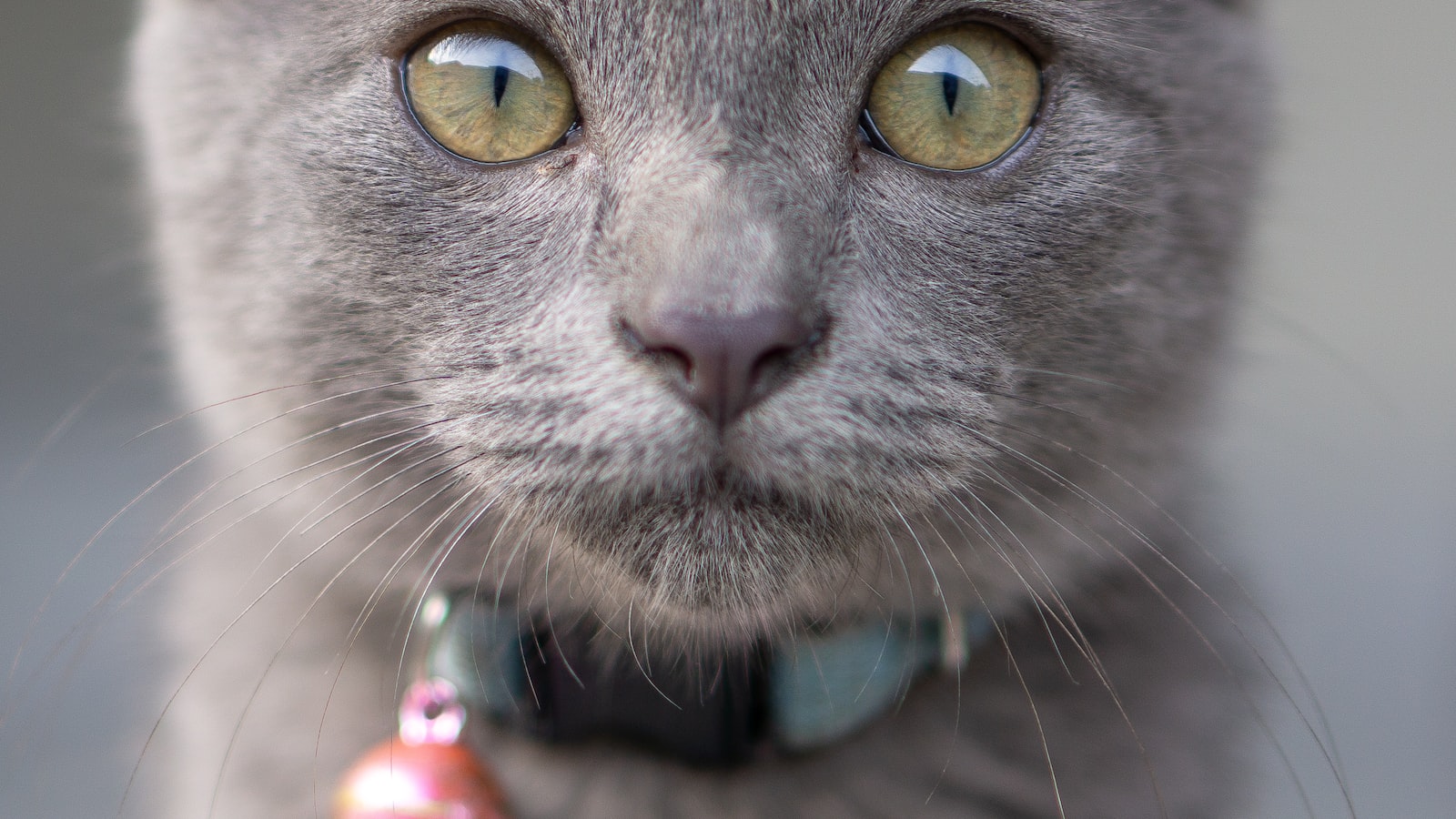In a world where independence is celebrated, it’s easy to overlook the deep emotional connections that we can form with our feline companions. From cozy cuddle sessions to mischief-filled playtimes, the bond we share with our precious kitties can be truly extraordinary. However, just like us, cats can also experience separation anxiety when we have to be apart. We’ve all witnessed the telltale signs – the pitiful meowing, the frantic scratching at doors, and the heartbreaking sight of those soulful eyes longing for our return. But fear not, dear cat lovers, for there are strategies that can help ease separation anxiety in your precious feline. In this article, we delve into the intricacies of feline anxiety, exploring creative approaches that will assist you in nurturing a calmer kitty, ready to conquer the world, one confident paw at a time. So, let us embark on this journey together, discovering the fascinating realm of feline separation anxiety and the secrets to bringing peace to our adorable four-legged friends.
Understanding Separation Anxiety in Cats: Identifying the Causes and Signs
When it comes to our feline friends, separation anxiety is a real concern that can affect their overall well-being. It’s crucial for cat owners to understand the causes and signs of this condition so they can provide the care and support their furry companions need. Here are some key points to help you identify separation anxiety in cats:
- Change in behavior: If you notice your normally confident and independent cat becoming clingy or excessively vocal when you leave the house, it could be a sign of separation anxiety.
- Inappropriate elimination: Cats with separation anxiety may start urinating or defecating outside of their litter box as a way to seek attention or mark their territory.
- Destructive behavior: Scratching furniture, chewing on household items, or excessively grooming themselves are common signs of distress in cats with separation anxiety.
Understanding the potential causes of separation anxiety is essential in addressing this issue effectively:
- Change in routine: Cats thrive on consistency, and any disruptions to their regular schedule, such as a move, a new addition to the family, or a change in feeding times, can trigger separation anxiety.
- Past experiences: Cats that have been abandoned, neglected, or experienced trauma in the past are more likely to develop separation anxiety due to their fear of abandonment.
- Lack of mental stimulation: Cats are intelligent creatures and need mental stimulation to prevent boredom. Without adequate playtime or interactive toys, they may become distressed when left alone.

Creating a Safe Space: Setting Up a Comfortable Environment for Your Cat
When it comes to our feline friends, ensuring they have a safe and comfortable space to call their own is essential for their well-being. Whether you have a new addition to the family or simply want to revamp their living area, these tips will help you create an environment that your cat will love to spend time in:
- Create cozy nooks: Cats love having their own designated spots to relax and unwind. Consider adding a variety of comfortable hiding places, such as cat caves, soft blankets, or even a window perch where your furry pal can bask in the sunlight and watch the world go by.
- Provide vertical spaces: Cats are natural climbers, and having vertical spaces can greatly enrich their environment. Install cat shelves or invest in a tall cat tree to give them the opportunity to survey their surroundings from high up, promoting a sense of security and reducing stress levels.
- Keep it clutter-free: A cluttered space can be overwhelming for a cat. Make sure to regularly declutter their area, removing any unnecessary items or objects. This will create a sense of order and tranquility, minimizing the risk of accidents and creating a visually pleasing environment.
By following these tips and customizing your cat’s surroundings to suit their preferences, you can create a safe space where they feel calm and content. Remember, creating a comfortable environment is not only beneficial for your feline companion’s mental and physical health but also contributes to a stronger bond between you and your beloved feline friend.
Gradual Departures and Departure Cues: Techniques to Teach Independence
In the journey towards fostering independence in our loved ones, gradual departures and departure cues can be invaluable techniques. By gradually easing our presence and providing cues, we can empower individuals to navigate and thrive independently, instilling them with confidence and self-reliance. Here are some creative strategies to teach independence:
- Stick to a consistent routine: Establishing a structured routine helps individuals understand expectations and reduces anxiety around departures. Consistency provides a sense of security and predictability, enabling them to prepare for your departure.
- Give visual cues: Visual cues, such as a checklist or a visual schedule, can guide individuals through daily tasks and routines. These cues serve as a visual reminder of what needs to be done and can help foster independence by allowing them to take charge of their own responsibilities.
- Practice short separations: Gradually increase the duration of time spent apart to help build resilience and independence. Start with short separations, and over time, extend the period based on their comfort level. Celebrate their accomplishments during each separation, reinforcing their ability to handle being on their own.
Remember, teaching independence is an ongoing process that requires patience and understanding. By implementing these techniques, we can empower our loved ones to develop the necessary skills and confidence to navigate the world with independence and resilience.
Positive Reinforcement and Enrichment Activities: Promoting Confidence and Well-being
Boosting confidence and promoting overall well-being is crucial for leading fulfilling lives. At our center, we believe in utilizing positive reinforcement and engaging enrichment activities to help individuals thrive. By focusing on strengths, celebrating achievements, and providing opportunities for growth, we strive to foster a sense of confidence and self-assurance within each person we serve.
Our enrichment activities are carefully curated to cater to a diverse range of interests and passions. Whether it’s through artistic expression, physical challenges, or intellectual pursuits, we offer a plethora of options to keep individuals engaged and enriched. Some of our popular activities include:
- Art therapy workshops: Engage in creative endeavors to enhance self-expression and boost self-esteem.
- Outdoor adventures: Thrilling experiences such as hiking, camping, and rock climbing to promote physical fitness and develop resilience.
- Music therapy sessions: Discover the joy of melodies and harmonies that can positively impact emotions and promote well-being.
- STEM exploration: Engage in hands-on science, technology, engineering, and math activities to foster critical thinking skills and problem-solving abilities.
We firmly believe that through positive reinforcement and a wide range of enrichment activities, individuals can develop the confidence they need to thrive and lead meaningful lives. Join us on this journey of self-discovery and growth!
In Summary
As we bid farewell to our feline friends, we hope that the strategies we’ve explored in this article will guide you towards a harmonious coexistence with your furry companion. Remember, easing separation anxiety is not an overnight endeavor; it requires patience, understanding, and a dash of creativity.
By implementing these strategies – from creating a cozy sanctuary to keeping your cat’s mind engaged – you can help your kitty navigate the unsettling depths of separation anxiety. As we’ve discovered, a calm and content cat is not simply a dream but a tangible reality, waiting to be embraced.
So, as you embark on this journey towards a calmer kitty, let us keep in mind that change takes time. In our busy lives, it’s crucial to remember that every effort we make in better understanding our feline friends strengthens the bond between us.
Perhaps one day, as you leave for work and glance back, you’ll catch a glimpse of your feline companion lounging peacefully by the window, their eyes gleaming with serenity. They will know they are not alone, that their beloved human will always return.
May this article be a guiding light for those moments when the challenges seem insurmountable, a reminder that with our unwavering dedication, we can ease the separation anxiety that plagues our precious cats. So, bid farewell to stress-ridden goodbyes and welcome the realm of tranquility and companionship.
With a heart full of empathy and optimism, we leave you with these final words: may your cat find solace in your absence and may your home be a sanctuary of love and peace.
If you are the pet owner of a nervous and anxious cat, it is likely you are feeling overwhelmed by their worrisome behavior and looking for strategies to ease their separation anxiety. Typically, cats easily adjust to being left alone, however, some cats experience overwhelming anxiety when their people leave the home, leading to destructive behavior. Fortunately, there are several steps you can take to help your cat adjust to being alone and make it a calmer and happier experience.
To begin, take the stress out of leaving by not making a dramatic exit. Instead of leaving quickly and noisily, take a few moments to pet your cat, and lower your tone of voice to a calming level when saying goodbye. Additionally, pair the departure cue of grabbing keys and putting on shoes with something positive, such as a treat. This will help your pet associate being separated from you with something pleasant.
Be sure to provide for your cat’s physical and mental needs while you are away. Mental stimulation can be provided in the form of puzzle toys, scratching posts, or even the installation of a window perch. Additionally, cats will benefit from a consistent routine, including open access to food and water, regular meal times, interactive play sessions, and predictable times for grooming. A consistent routine will help alleviate feelings of abandonment.
Creating a comfortable space for your cat while you are away is also essential. Establish a designated kitten-only zone where they are free to explore and spread out their toys, food, and litter box. This can be supplemented with the addition of a few catnip infused activities such as scratching posts or interactive toys. Having a favorite toy or blanket in the area will also give your kitty a sense of comfort and security, which will help decrease their separation anxiety.
Finally, try to provide a safe and secure environment for your cat. Place gates or other barriers to discourage them from entering areas where they can become wounded or ill, such as bathrooms. Additionally, keep windows and doors secured with shutters and locks for added safety measures while you are away.
There are a variety of steps you can take to help ease separation anxiety in cats. By providing a comfortable and safe space for your kitty, establishing positive associations with being left alone, and creating consistent routines, you can make being away from home a less stressful experience for both you and your cat.




